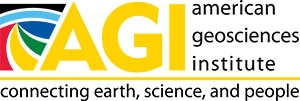
FactSheet on Geoscience in Texas
Workforce in Texas
- 59,000: geoscience employees (non-federal/self-employed) in 20151
- $103,500: average median geoscience employee salary1
- 270,000: jobs in extractive industries in 20152
- 80: academic geoscience departments3
Water in Texas
- 7.7 billion gallons/day: total groundwater withdrawal4
- 17 billion gallons/day: total surface water withdrawal4
- 4 billion gallons/day: public water supply withdrawal4
- 6.8 million gallons/day: irrigation water withdrawal4
- 680 million gallons/day: self-supplied industrial fresh water withdrawal4
- 90% of the population is served by public water supplies4
- 174 counties in 2015, and 11 counties in 2016, designated as primary natural disaster areas caused by drought5
- 275 USGS stream gages in Texas6
Energy and Minerals Production in Texas
- $4.8 billion: value of nonfuel mineral production in 20167
- 1.26 billion barrels: crude oil produced in 2015, #1 in the nation2
- 8.8 trillion cubic feet: natural gas produced in 2015, #1 in the nation2
- 43.7 million short tons: coal produced in 20142
- 45 million megawatt hours: wind power produced in 2015, #1 in the nation2
Natural Hazards in Texas
FEMA statistics for Texas
- 20 severe storm disaster declarations since 19538
- 20 hurricane/tropical storm disaster declarations since 19538
- 36 flooding disaster declarations since 19538
- 15 tornado disaster declarations since 19538
- 154 fire disaster declarations since 19538
- $1.66 billion: mitigation grants since 20058
- $1.950 billion: preparedness grants since 20058
- $3.73 billion: public assistance grants since 20058
- 84 weather and/or climate events, each with costs exceeding $1 billion (inflation adjusted) 1980-20169
U.S. Geological Survey (USGS) Geologic Mapping
- $1.06 billion: total USGS budget; 1.6% up from FY 201510
- The USGS National Cooperative Geologic Mapping Program (NCGMP) funds geologic mapping projects by states (STATEMAP) and universities (EDMAP)
- $2.6 million: Texas STATEMAP funding (1993-2016)11
- 40 Texas counties mapped or partially mapped with STATEMAP funds (1993-2010)11
- 439 geologic maps in Texas created with STATEMAP support (1993-2010)11
- 20,000 square miles in Texas mapped through STATEMAP (1993-2010)11
- 4 Texas universities participated in EDMAP11
National Aeronautics and Space Administration (NASA)
- $5.6 billion: total NASA Science budget; 6.6% up from FY 201512
- $1.9 billion: total NASA Earth Science budget; 7.7% up from FY 201513
- GRACE satellites measure groundwater changes in all of Texas14
- SMAP satellite measures soil moisture in all of Texas14
National Oceanic and Atmospheric Administration (NOAA)
- $5.8 billion: total NOAA budget; 5.9% up from FY 201515
- GOES satellites provide state-of-the-art weather forecasting over Texas16
- DISCOVR satellite monitors radiation and air quality over Texas16
- 71 National Weather Service observing stations in Texas17
- 634 National Weather Service cooperative observer sites in Texas17
National Science Foundation (NSF)
- $7.46 billion: total NSF budget; 1.6% up from FY 201518
- $1.28 billion: total NSF Geosciences Directorate (GEO) budget; 1.6% up from FY 201518
- 1,093 NSF grants in Texas totaling $343.3 million in 201618
- 118 NSF GEO grants in Texas totaling $67.5 million in 201618
- $100 million: NSF grants at U.T. Austin, the 6th largest grant academic recipient in 201618
- $46 million: NSF GEO grant to Texas A&M, the largest NSF GEO grant to an academic institution in 201618
U.S. Environmental Protection Agency (EPA)
- $8.14 billion: total EPA budget; 0% up from FY 201519
- 66 active/proposed superfund sites20
- $1.4 billion: cumulative federal grants for Drinking Water State Revolving Fund (DWSRF) in Texas (1997-2016)21
- $60.1 million: annual value of federal DWSRF grants in Texas in 201621
Major Federal Facilities in Texas
- NASA Johnson Space Center, Houston
- NOAA Center for Atmospheric Sciences, El Paso
- DOE National Energy Technology Laboratory, Sugar Land
- USGS Texas Water Science Center, Austin
References
1Data Derived from Bureau of Labor Statistics Occupational Employment Statistics (2015)
2DOI U.S. Extractive Industries Transparency Initiative
3American Geosciences Institute Directory of Geoscience Departments (2016)
4USGS Estimated Use of Water in the United States in 2010
5USDA Farm Service Agency: Disaster Designation Information, 2015 (2015 Crop Year & 2016 Crop Year)
6USGS WaterWatch Total Streamgage Stations (March 10, 2017)
7USGS Mineral Commodity Summaries 2017
8FEMA Summary of Disaster Declarations and Grants (2016)
9NOAA Billion-Dollar Weather and Climate Disasters: Mapping
10DOI Budget and Performance
11USGS National Cooperative Geologic Mapping Program
12NASA Budget Documents, Strategic Plans and Performance Reports
13American Institute of Physics FY2016 Appropriations
14Gravity Recovery and Climate Experiment (GRACE); Soil Moisture Active Passive (SMAP); Plankton, Aerosol, Cloud, ocean Ecosystem (PACE); Global Precipitation Measurement (GPM)
15NOAA Total Budget
16Geostationary Operational Environmental Satellite (GOES) & Deep Space Climate Observatory (DISCOVR)
17NOAA in Your State
18NSF Budget Internet Information System
19EPA Budget and Spending
20EPA Search for Superfund Sites Where You Live (March 2017)
21EPA Drinking Water State Revolving Fund National Information Management System Reports
Date updated: 2017-07-26
For PDF (here).
Written and compiled by Jeremiah Bernau for AGI, April 2017











